But first, a look at yours truly:
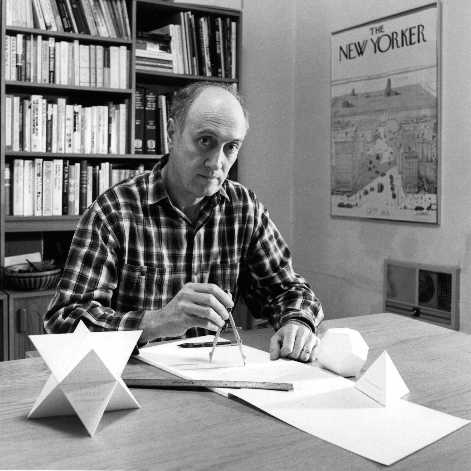
Vanity, Vanity! Just on the off chance that you are curious as to who makes these engines, I offer the below photo of myself, pursuing other hobbies: the construction of paper models of geometric solids and the construction of wooden interlocking puzzles. The subjects are not as far apart as you might imagine. The puzzles are based on polygons and polyhedra, and both require precision in their making. Both fun and rewarding pastimes!
But first, a look at yours truly:

The solid on the left (my right) is a stellated octahedron. The one nearest my left hand, a dodecahedron (12 faces), and the one in front of it, a tetrahedron. The last are two of the five regular polyhedra. Not shown are the cube, octahedron and icosahedron, having, respectively, 6, 8 and 20 faces.
For those of you who would like to know more about polyhedra,
I have made a list of books that have helped me understand more about these
beautiful objects. You will find it here.
Hey! We have found a web
site on geometric solids! Point
your browser to http://www.georgehart.com/.
You will be amazed!
And now for a look at the puzzles: (click on an image for a larger view)
| This puzzle was among the ones I brought to NAMES this year,
and was a favorite of many of our visitors. It is a 6 piece interlocking
puzzle of a special type: a coordinate motion puzzle. This means that it
can not be assembled piece by piece, but rather goes together all at once.
You have to arrange the pieces in their relative positions, then slide
them together simultaneously. I don't know of anyone who has disassembled
this one without knowing the secret!
Just below is one of the six identical pieces of the puzzle, and to the right, what you would have to deal with if challenged to assemble this one! |
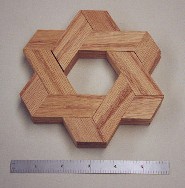 |
 If you would like a drawing
of this puzzle, email me here. If you would like a drawing
of this puzzle, email me here. |
 |
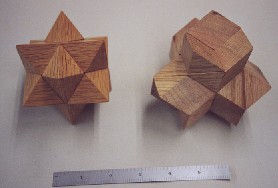 |
These two burr puzzles, although not at all look alikes, are
basically similar in construction and assembly. Again, like the hex puzzle
above, they can not be assembled a piece at a time. They could be
assembled like the hex puzzle, by positioning all 6 pieces and then
sliding them together, but you would need at least four hands to do it
this way! There is a simpler way, but I will leave it as a mental
exercise! ;-)
Below you will find pictures of each burr disassembled, with a typical piece out front so you can see how they are made. |
| This burr is the same construction as the one on the left above, but with a contrasting wood for the outer end pieces. The woods in this instance are oak and purpleheart, a pretty combination, and lending a new look to the burr. | 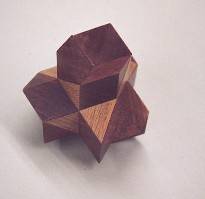 |
 |
Here are four puzzles, 3 of which are burrs similar in construction to those above, even the one with the "ring around its middle"! The triangular puzzle is an assembly puzzle. The outer shell is tapered inward, and each piece has tapered sides. Not a really difficult puzzle, but moderately challenging and certainly attractive. The wood is maple, as is parts of the two to the left. The contrasting wood in those is walnut. |
| And last but not least is the star puzzle. This is four
interlocking triangles, each of 3 pieces. This is another coordinate
motion puzzle, but with an additional twist: four sets of three pieces,
each set a mini coordinate motion puzzle in itself! This one was a real
challenge to build. The slot in each of the 12 identical pieces is at a
compound angle to the stick. I had to make a jig which was adjustable to
within about .005" or less to make this one assemble correctly.
As time allows, I will post photos of the jigs that I use to cut parts for these and other puzzles. |
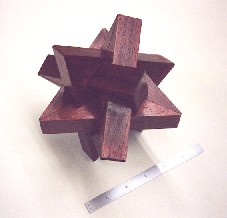 |